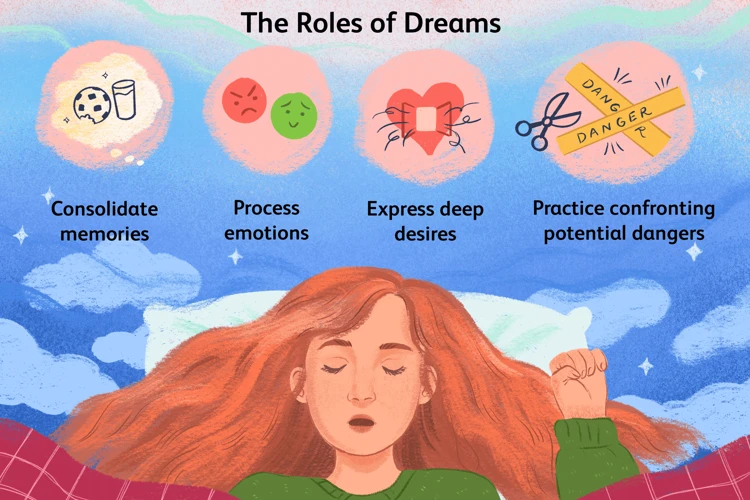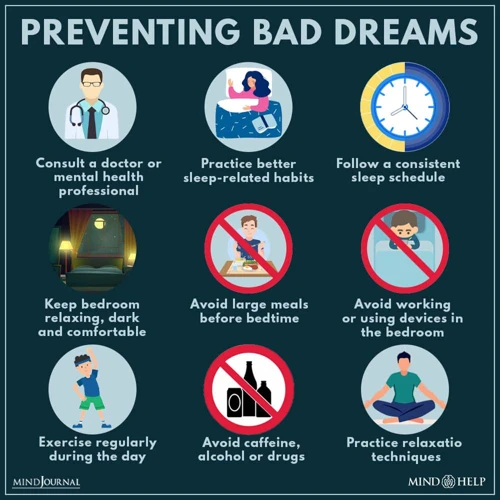Nightmares in children can be a distressing experience for both the child and their parents. It’s important for parents to understand the causes and signs of nightmares, as well as how to provide comfort and support when they occur. In this comprehensive guide, we will explore the common causes of nightmares in children, the signs and symptoms to look out for, and when to seek professional help. We will also provide practical tips and strategies for preventing nightmares and creating a safe sleep environment. Additionally, we will discuss effective coping mechanisms and techniques for managing nightmares in children. By equipping yourself with this knowledge, you can better support your child through their nighttime fears and help them get a good night’s sleep.
Understanding Nightmares

Nightmares are vivid and disturbing dreams that occur during REM (rapid eye movement) sleep. Unlike night terrors, which are characterized by intense fear and can cause physical symptoms, nightmares often have a storyline and evoke feelings of fear, anxiety, or distress. They can vary in intensity and frequency depending on the child. Nightmares typically happen in the second half of the night when REM sleep is more likely to occur.
One theory suggests that nightmares may serve a purpose in helping children process emotions, fears, and anxieties. Nightmares can also be influenced by a child’s experiences, both recent and past, as well as their imagination. For example, exposure to scary movies, books, or events may contribute to the content of nightmares.
It’s important to note that nightmares are a normal part of childhood and are usually not a cause for concern. However, if nightmares become frequent and significantly disrupt a child’s sleep or daily functioning, it may be necessary to seek professional help.
For those who are interested in further exploring the science behind nightmares, research on lucid dreaming and nightmares provides valuable insights into the relationship between consciousness and dream experiences. Additionally, understanding the role of medication in treating nightmares and sleep disorders can offer alternative approaches for managing nightmares in children. It’s also worth noting that sleep deprivation can have an impact on nightmares and dreams, further emphasizing the importance of maintaining healthy sleep habits for children.
By gaining a deeper understanding of nightmares, parents can better support their children in managing and coping with these unsettling dreams.
Common Causes of Nightmares in Children

There are several common causes of nightmares in children that parents should be aware of. These causes can vary from child to child, but here are some of the most frequently observed triggers:
1. Anxiety and Stress: Children who are experiencing high levels of stress or anxiety, whether it’s related to school, family dynamics, or other factors, may be more prone to nightmares. The emotions they feel during the day can carry over into their dreams, leading to disturbing or scary experiences.
2. Traumatic Events: Witnessing or experiencing a traumatic event, such as an accident or natural disaster, can leave a lasting impact on a child’s psyche. Nightmares can serve as a way for their minds to process and make sense of the event. It’s important to provide appropriate support and professional help if needed in these situations.
3. Illness or Medications: Certain illnesses or medications can influence a child’s sleep patterns and increase the likelihood of nightmares. For example, fever, respiratory issues, or certain medications used to treat illnesses can disrupt their normal sleep cycle and contribute to nightmares.
4. Sleep Environment: Factors within a child’s sleep environment can also contribute to nightmares. This includes sleeping in a room that is too hot or too cold, uncomfortable sleeping arrangements, or disruptions in sleep patterns. Ensuring a comfortable and conducive sleep environment can help reduce the risk of nightmares.
5. Scary Media Content: Exposure to scary movies, TV shows, video games, or books that are not age-appropriate can lead to nightmares. Children have vivid imaginations, and the content they consume can manifest in their dreams.
It’s important for parents to be aware of these common causes and to address any underlying issues that may be contributing to their child’s nightmares. By identifying the specific triggers, parents can take steps to alleviate anxiety, create a safe sleep environment, and provide the necessary support to help their child manage and overcome their nightmares.
Signs and Symptoms of Nightmares

Recognizing the signs and symptoms of nightmares in children can help parents identify when their child is experiencing these distressing dreams. While nightmares typically occur during REM sleep, signs of nightmares can be observed during both sleep and wakefulness.
During sleep, a child experiencing a nightmare may display physical signs such as sweating, rapid breathing, elevated heart rate, and even waking up in a state of distress. They may also cry out, whimper, or talk in their sleep. It’s important for parents to remember that these physical symptoms are typically short-lived and not a cause for alarm.
In the morning or upon waking, a child may exhibit emotional signs of having had a nightmare. They may appear anxious, fearful, or clingy. They might also exhibit reluctance or fear of going to sleep, specifically mentioning fearful dreams as the cause. Some children may have difficulty falling back asleep after a nightmare, leading to daytime fatigue and irritability.
It’s crucial for parents to pay attention to any changes in a child’s behavior or sleep patterns that may be associated with nightmares. If nightmares become frequent or significantly disrupt a child’s well-being and daily functioning, it may be indicative of an underlying issue that requires further attention and support.
By being vigilant and recognizing the signs and symptoms of nightmares, parents can ensure that their children receive the necessary comfort and reassurance during these unsettling experiences.
When to Seek Professional Help

While nightmares are generally considered a normal part of childhood, there are instances when it may be necessary to seek professional help. It is important for parents to recognize the signs that indicate when their child’s nightmares require professional intervention.
One indication is if nightmares significantly impact the child’s quality of sleep and overall well-being. If a child experiences frequent nightmares that result in extreme fear, anxiety, or distress, it may be a sign that professional assistance is needed. These recurring nightmares can disrupt a child’s sleep patterns, leading to fatigue, irritability, and difficulty concentrating during the day.
Another factor to consider is the duration of the nightmares. If a child consistently experiences nightmares over an extended period, such as several weeks or months, it may be beneficial to consult with a healthcare professional. They can evaluate the situation and determine whether there are underlying issues contributing to the frequency and intensity of the nightmares.
Additionally, if a child’s nightmares are accompanied by other concerning symptoms such as night sweats, sleepwalking, or excessive daytime sleepiness, it is prudent to seek medical advice. These symptoms may be indicative of an underlying sleep disorder or other medical condition that requires attention.
It is also essential to observe the emotional and behavioral impact of nightmares on a child. If nightmares lead to significant changes in a child’s mood, behavior, or social interactions, it may be necessary to involve a healthcare provider. They can assess whether there are underlying psychological or emotional factors contributing to the nightmares and recommend appropriate interventions or treatment options.
If in doubt, it is always better to seek professional guidance. A healthcare professional specializing in pediatric sleep disorders or child psychology can provide the necessary expertise and support to help manage and alleviate the impact of nightmares on a child’s well-being.
Remember, the decision to seek professional help should be based on careful observation and consideration of the child’s individual circumstances. Open communication with your child and involving healthcare professionals when needed will ensure that appropriate support is provided to address any concerns related to nightmares.
Preventing Nightmares

Preventing nightmares in children involves creating a calming bedtime routine, encouraging positive thoughts and imagery, and reducing exposure to scary media. Establishing a consistent bedtime routine can signal to the child’s brain that it’s time to wind down and prepare for sleep. This can include activities such as reading a book, taking a warm bath, or practicing relaxation techniques. Additionally, parents can help their children develop a positive mindset by engaging in bedtime conversations focused on happy thoughts and pleasant experiences. It’s important to be mindful of the media children are exposed to, as scary or violent content can contribute to nightmares. Limiting screen time before bed and choosing age-appropriate content can help reduce the likelihood of frightening dreams. By implementing these strategies, parents can play an active role in preventing nightmares and promoting restful sleep for their children.
Creating a Calming Bedtime Routine
A calming bedtime routine plays a crucial role in helping children relax and prepare for a restful night’s sleep, which can significantly reduce the likelihood of nightmares. Here are some tips for creating a soothing bedtime routine:
1. Consistency: Establish a consistent bedtime and wake-up time for your child. Consistency helps regulate their internal body clock and promotes better sleep quality.
2. Screen-free time: Avoid screens (such as television, tablets, and smartphones) at least an hour before bedtime. The blue light emitted by screens can interfere with the production of melatonin, a hormone that regulates sleep.
3. Relaxation activities: Incorporate calming activities into the bedtime routine, such as reading a book, listening to soft music, or taking a warm bath. These activities help signal to the body that it’s time to wind down.
4. Comfortable sleep environment: Ensure that your child’s sleep environment is comfortable and conducive to sleep. This includes having a supportive mattress, cozy bedding, and a cool, dark, and quiet room.
5. Bedtime snacks: Avoid giving your child heavy meals or sugary snacks close to bedtime, as these can disrupt sleep. Instead, opt for light and healthy snacks that won’t cause discomfort or indigestion.
6. Bedtime rituals: Develop soothing rituals that your child finds enjoyable, such as a gentle massage, cuddling, or practicing deep breathing exercises together. These rituals provide a sense of security and relaxation.
7. Positive associations: Associate bedtime with positive experiences by creating a calm and loving atmosphere. Use soft lighting, play soft relaxing music, or use a nightlight if it helps your child feel safe and secure.
By implementing a calming bedtime routine, you can help your child transition from a busy day to a peaceful night of sleep, reducing the likelihood of nightmares. Remember, it may take time for your child to adjust to the new routine, so be patient and consistent in your efforts.
Encouraging Positive Thoughts and Imagery
Encouraging positive thoughts and imagery can be a helpful strategy in managing nightmares in children. By promoting a positive mindset, children can develop a sense of empowerment and resilience when confronted with scary dreams. Here are some effective techniques to encourage positive thoughts and imagery:
1. Visualization exercises: Guide your child through a visualization practice where they imagine themselves in a safe and happy place. This can be a calming beach, a peaceful meadow, or any other comforting setting. Encourage them to use their senses and engage with the positive aspects of their imaginary environment, such as the sound of waves or the feeling of soft grass beneath their feet.
2. Bedtime stories: Choose age-appropriate books with uplifting and positive themes for bedtime storytelling. These stories can instill positive values, emphasize bravery and resilience, and help shift the focus away from fearful thoughts.
3. Positive affirmations: Teach your child to use positive affirmations before bedtime. Encourage them to repeat statements like “I am safe and protected,” or “I have happy dreams.” This can help replace negative thoughts with positive ones and promote a sense of security.
4. Encourage creative outlets: Engage your child in creative activities that allow them to express their emotions in a positive way. Drawing, painting, or writing stories about overcoming fears can provide an outlet for their anxieties and help them focus on positive outcomes.
5. Practice gratitude: Encourage your child to think about things they are grateful for before bed. This can help shift their focus towards positive aspects of their life and promote a sense of contentment.
By incorporating these strategies into your child’s routine, you can help them develop a more positive mindset, which can ultimately reduce the occurrence and intensity of nightmares. Remember to be patient and consistent in implementing these techniques, as they may take time to show significant effects.
Reducing Exposure to Scary Media
Reducing a child’s exposure to scary media can play a significant role in preventing nightmares. Imagery from movies, television shows, video games, and even books can leave a lasting impression on a child’s mind, potentially leading to unsettling dreams during sleep. Here are some strategies to minimize exposure to scary media:
1. Monitor and Control Screen Time: Limit the amount of time your child spends watching television or using electronic devices. Set clear boundaries and establish rules regarding the type of content they are allowed to consume.
2. Research Age-Appropriate Content: Before allowing your child to watch a movie or play a video game, conduct thorough research to ensure that it is suitable for their age and developmental stage. Look for age recommendations and parental guidance ratings.
3. Preview Content in Advance: Watch or read media content in advance to assess its appropriateness for your child. This will allow you to identify any potentially scary or disturbing elements that may trigger nightmares.
4. Engage in Co-Viewing or Co-Reading: Watch television shows or movies with your child, or read books together. This way, you can provide guidance and discuss any scary or unsettling scenes, helping your child process the content and understand that it is fictional.
5. Encourage Alternative Forms of Entertainment: Encourage your child to engage in activities that promote positive and imaginative thinking, such as playing outdoor games, participating in creative arts, or reading books with uplifting themes.
Remember, minimizing exposure to scary media is just one aspect of preventing nightmares in children. It’s essential to combine this strategy with other techniques, such as creating a calming bedtime routine and providing reassurance and comfort during nighttime disturbances. By taking an active approach in managing your child’s media consumption, you can contribute to a safer and more peaceful sleep environment.
Providing Reassurance and Comfort during Nightmares

During nightmares, children often feel scared, anxious, and unsettled. As parents, it is crucial to provide them with reassurance and comfort to help alleviate their distress. One effective way to offer support is by being available and responsive when your child wakes up frightened from a nightmare. Create a safe space where they can express their feelings and fears without judgment. Additionally, encouraging the use of comfort objects, such as a favorite stuffed animal or blanket, can provide a sense of security. Offering verbal reassurance and speaking calmly can help reassure your child that they are safe and loved. By providing a nurturing and understanding environment, parents can help their children feel comforted and supported during and after nightmares.
Being Available and Responsive
Being available and responsive is crucial when comforting a child during nightmares. Here are some strategies that parents can employ:
1. Stay close: Sleep in close proximity to your child if they are comfortable with it. This can provide a sense of security and reassurance, knowing that you are nearby.
2. Respond promptly: When your child wakes up from a nightmare, be attentive and respond promptly. Comforting words and actions can help them feel safe and ease their anxiety.
3. Show empathy: Validate your child’s feelings by acknowledging their fear and expressing empathy. Let them know that it’s okay to feel scared and that you are there to support them.
4. Offer physical comfort: Physical touch can be comforting for children. Hug them, hold their hand, or stroke their back gently to help them feel safe and secure.
5. Listen actively: Encourage your child to talk about their nightmare if they feel comfortable doing so. Listen attentively and without judgment, allowing them to express their emotions and fears.
6. Stay calm: It’s essential for parents to remain calm and composed during their child’s nightmares. Your own anxiety or distress can inadvertently increase your child’s fear or anxiety.
7. Reassure safety: Remind your child that they are safe and that the nightmare was just a dream. Offer reassurance that you are there to protect them and that they can always rely on you for support.
8. Establish a comforting routine: Create a daytime routine with your child to discuss and process their fears so that they feel prepared and supported before going to bed.
By being available and responsive, parents can provide the comfort and reassurance that their child needs during and after nightmares, helping them feel safe and confident as they navigate through these unsettling experiences.
Using Comfort Objects
Using comfort objects can be an effective way to provide reassurance and comfort to children during nightmares. Comfort objects are items that hold special significance and provide a sense of security and familiarity. These objects can range from stuffed animals and blankets to favorite toys or even a specific pillow.
Having a comfort object can help children feel safe and protected, especially when they are in an unfamiliar or unsettling situation like waking up from a nightmare. The familiar touch, smell, and texture of the object can offer a sense of comfort and stability. Research suggests that these objects can act as transitional objects, helping children navigate the line between dependency and independence. They provide a sense of continuity and can serve as a source of emotional regulation during times of distress.
When introducing a comfort object, it is essential to involve your child in the process. Let them choose the object that brings them the most comfort and explain its purpose – that it is there to help them feel safe and secure during the night. Encourage your child to sleep with their comfort object every night so that it becomes a consistent part of their bedtime routine.
It’s important to note that comfort objects should be safe and age-appropriate. Avoid objects with small parts that could pose a choking hazard or materials that may cause allergies. Regularly wash or clean the comfort object to maintain hygiene and ensure it remains a reliable source of comfort.
Remember that comfort objects can provide temporary relief during nightmares, but it’s also essential to address any underlying fears or anxieties that may be contributing to the nightmares. By combining the use of comfort objects with other coping mechanisms and strategies, you can support your child in managing and overcoming their nightmares.
Offering Verbal Reassurance
Offering verbal reassurance is an important strategy for comforting children when they experience nightmares. It involves using words and communication to help alleviate their fears and anxieties. Here are some tips on how to offer verbal reassurance to your child:
1. Validate their feelings: Let your child know that their feelings are normal and understandable. Assure them that it is okay to feel scared or upset after a nightmare. Use phrases like, “I understand that was scary for you” or “It’s okay to feel scared sometimes.”
2. Provide comfort and support: Reassure your child that they are safe and loved. Use calming and soothing language to help them feel secure, such as, “You are safe in your bed” or “I am here with you, and I won’t let anything harm you.”
3. Encourage them to share their dream: Ask your child to describe their nightmare if they feel comfortable doing so. Listening attentively to their description can help them process their emotions and fears. Avoid dismissing or minimizing their experience, even if the content of the nightmare seems unrealistic.
4. Empower them with positive outcomes: Help your child create a more positive ending or solution for their nightmare. Encourage them to imagine a different outcome or a happy ending. For example, you can say, “What if you had superpowers in your dream? How would you use them to overcome the scary part?”
5. Use calming words and phrases: Incorporate calming words and phrases into your verbal reassurance. For instance, say things like, “Take deep breaths with me” or “Close your eyes and imagine a peaceful place.” These words can help your child relax and shift their focus away from the nightmare.
Remember, verbal reassurance should be combined with other comforting strategies like being available and responsive, as well as using comfort objects. Every child is unique, so find the approach that works best for your child’s individual needs.
Teaching Coping Mechanisms for Nightmares

Teaching coping mechanisms for nightmares is an essential step in helping children manage their fears and anxieties during sleep. One effective technique is deep breathing exercises, which can help regulate breathing patterns and promote relaxation. Encouraging children to visualize positive and calming imagery before bedtime can also be beneficial. This can involve picturing themselves in a peaceful place or thinking of happy memories. Another strategy is to introduce positive affirmations, where children repeat reassuring statements to themselves, such as “I am safe” or “I am brave.” By incorporating these coping mechanisms into a child’s bedtime routine, parents can provide them with valuable tools to address and minimize the impact of nightmares.
Deep Breathing Exercises
Deep breathing exercises can be a helpful tool for children to manage their nightmares and reduce anxiety. These exercises focus on slowing down the breath and promoting relaxation. One effective deep breathing exercise for children is called the “4-7-8” technique.
To begin, have your child sit or lie down in a comfortable position. Instruct them to take a deep breath in through their nose for a count of four seconds, feeling their belly rise as they fill their lungs with air. Next, ask them to hold their breath for a count of seven seconds. Finally, encourage them to exhale slowly through their mouth for a count of eight seconds, releasing any tension or stress with each breath.
Practicing deep breathing exercises before bedtime can help your child relax their mind and body, making it easier for them to fall asleep and reduce the likelihood of experiencing nightmares. It’s important to emphasize that deep breathing exercises should be taught and practiced during periods of calm and relaxation, rather than during a nightmare episode, as it may be challenging for a child to engage in these exercises during moments of heightened fear or distress.
In addition to the 4-7-8 technique, there are other variations of deep breathing exercises that you can explore with your child. For example, you can encourage them to imagine inhaling positivity and exhaling negativity, visualizing each breath bringing in calmness and pushing out any worries or fears. Incorporating these deep breathing exercises into their bedtime routine can provide a sense of control and relaxation, ultimately minimizing the occurrence of nightmares and promoting better sleep overall.
Visualization Techniques
Visualization techniques can be a helpful tool for children to manage and cope with nightmares. This technique involves creating vivid mental images of calming and positive scenes or situations. By engaging the imagination, visualization can distract the mind from the fear and anxiety associated with nightmares. Here are some effective visualization techniques to consider:
1. Dreamy Destinations: Encourage your child to imagine a peaceful and safe place where they would like to be in their dream. It could be a beautiful beach, a cozy cabin in the woods, or a serene meadow. Encourage them to picture themselves in this place, feeling calm, happy, and protected.
2. Power Symbols: Help your child identify a symbol or object that makes them feel safe and strong. It could be a favorite toy, a cherished item, or even a superhero cape. Have them visualize this special symbol and imagine it giving them strength and protection during their dreams.
3. Colorful Imagery: Guide your child to use colors in their visualization. Encourage them to imagine soothing and calming colors such as blue, green, or purple surrounding them. They can visualize these colors enveloping them like a comforting blanket, creating a sense of relaxation and security.
4. Creative Storytelling: Encourage your child to create their own positive story or scenario. They can imagine themselves as the hero or a character who overcomes challenges or turns scary situations into positive ones. This empowers children and helps them feel more in control of their dreams.
During bedtime, you can guide your child through these visualization techniques. Create a quiet and calm environment, dimming the lights, and encouraging deep breathing. Together, visualize the chosen scenes or symbols, and discuss how they make your child feel. Practicing these techniques regularly can help your child develop the ability to calm themselves and shift their focus during nightmares.
Positive Affirmations
Positive affirmations can be a powerful tool for helping children cope with nightmares. Affirmations are positive statements that children can repeat to themselves to promote feelings of safety, security, and positivity. These statements can help counteract the negative thoughts and fears associated with nightmares.
When teaching positive affirmations to children, encourage them to choose phrases that resonate with them and address their specific fears. For example, if a child frequently has nightmares about monsters, they can repeat affirmations like “I am brave and strong” or “I am safe in my own bed.” These statements help shift their mindset from fear to confidence.
To make positive affirmations more effective, encourage children to say them out loud or write them down in a journal. Repetition is key, so it’s important for children to practice affirmations regularly, both during the daytime and before bedtime. Reinforce the importance of believing in the affirmations and remind children that they have the power to change their thoughts and feelings.
It’s worth noting that positive affirmations should not be used as a substitute for addressing and processing underlying fears or trauma. If a child’s nightmares persist despite the use of affirmations, it may be necessary to seek professional help to uncover and address any deeper issues.
Incorporating positive affirmations into a child’s nighttime routine can help create a sense of calm and empowerment. By reinforcing positive self-talk, children can develop resilience and a sense of control over their thoughts and emotions, ultimately reducing the impact of nightmares on their overall well-being.
Creating a Safe Sleep Environment

Creating a safe sleep environment is crucial in helping children feel secure and reducing the likelihood of nightmares. Addressing fears of the dark is an essential step. Consider using a night light or a dim light in the room to provide a comforting glow. Additionally, reducing noise in the surrounding environment can promote a more peaceful sleep. Using white noise machines or earplugs can be helpful if there are disruptive sounds. Establishing a consistent bedtime routine can help children feel calm and relaxed before sleep. This routine can include activities such as reading a soothing story or engaging in a calming activity. By implementing these strategies, parents can create a safe and comforting sleep environment for their children, promoting better sleep and minimizing the occurrence of nightmares.
Addressing Fear of the Dark
Addressing fear of the dark is an important aspect of creating a safe sleep environment for children. Many children experience fear or discomfort when it’s time to sleep in a dark room. Here are some strategies to help address this fear:
1. Night Lights: Using a night light can provide a comforting glow in the room, reducing the fear of darkness. Opt for a soft, dim light that won’t interfere with your child’s sleep. Placing the night light near their bed or in a corner of the room can help alleviate anxiety.
2. Gradual Exposure: If your child is afraid of the dark, gradually expose them to darkness over time. Start by dimming the lights slightly and gradually making the room darker each night. This gradual exposure can help them feel more comfortable with the dark.
3. Nighttime Rituals: Establishing a calming nighttime routine can help ease a child’s fear of the dark. Incorporate activities like reading a bedtime story, cuddling with a favorite stuffed animal, or listening to calming music. This routine can create a sense of security and reassurance.
4. Open Communication: Encourage your child to express their fears and concerns about the dark. Provide a space for open communication where they feel comfortable sharing their feelings. Assure them that it’s okay to feel scared and that you’re there to support and protect them.
5. Positive Association: Create positive associations with the dark by introducing enjoyable activities during the day that involve darkness, such as stargazing or using a flashlight for imaginative play. This can help shift their perception of darkness from being scary to something more neutral or even enjoyable.
By addressing fear of the dark in a supportive and understanding manner, parents can help their children overcome this fear and create a more peaceful sleep environment. Remember to be patient and consistent, as it may take time for your child to feel comfortable sleeping in the dark.
Noise Reduction
Noise can be a significant factor in triggering or intensifying nightmares in children. Loud or sudden noises during sleep can disrupt the sleep cycle and cause fearful or unsettling dreams. Implementing noise reduction strategies in a child’s sleep environment can help create a calmer and more peaceful atmosphere for sleep.
One effective way to reduce noise is by using white noise machines or sound-producing devices. These devices emit a constant, soothing background noise that can mask sudden sounds and create a consistent and relaxing environment. White noise machines can be particularly helpful for children who are sensitive to outside noises or live in loud environments.
Additionally, consider addressing any sources of noise within the child’s bedroom or surrounding areas. Ensure that windows and doors are properly sealed to minimize sounds from outside. If there are loud appliances or electronic devices nearby, try to relocate them or find ways to dampen their noise.
In some cases, a child may have difficulty sleeping due to anxiety about certain noises. If this is the case, it may be helpful to have open and honest conversations with the child about their fears and explore ways to alleviate their anxiety. For example, using earplugs or headphones can provide a sense of comfort and control for children who are particularly sensitive to noise.
By minimizing noise disturbances in a child’s sleep environment, parents can help create a more peaceful atmosphere that promotes better sleep and reduces the likelihood of nightmares. This, in turn, can contribute to a more restful night’s sleep and a decreased frequency or intensity of nightmares.
Night Lights
Night lights can be a helpful tool in creating a safe sleep environment for children who experience nightmares. These gentle, dim lights provide a comforting glow that can alleviate fears of the dark and make the bedroom feel more secure. The soft illumination of a night light can provide a sense of comfort and reassurance during the night, easing any anxiety or worry that may contribute to nightmares.
When choosing a night light, opt for a warm-colored bulb rather than a harsh, bright light. Warm tones create a cozy and relaxing atmosphere, promoting a sense of relaxation and calmness. Avoid lights with intense blue or white hues, as they can interfere with the body’s natural production of melatonin, the hormone that regulates sleep.
It’s important to place the night light strategically in the bedroom. Position it in a spot that provides enough light to create a soothing ambiance, but not too much light that it disrupts sleep. Placing the night light near the child’s bed or in a corner of the room can be an effective way to provide a subtle glow without overwhelming the space.
While a night light can be beneficial for many children, it’s important to consider individual preferences. Some children may feel more comfortable with a slightly brighter light, while others may prefer a darker environment. Pay attention to your child’s feedback and adjust the lighting accordingly.
In instances where a child consistently experiences nightmares despite the presence of a night light, it may be helpful to explore other techniques, such as incorporating relaxation exercises or adjusting the bedtime routine. Every child is unique, and finding the right combination of strategies to create a safe and comforting sleep environment is key.
Dealing with Nightmares in the Morning
Dealing with nightmares in the morning can be challenging for both children and parents. After a night of unsettling dreams, it’s important to focus on the positive aspects of the day ahead. Encouraging your child to share their feelings about the nightmare can help them process and release any lingering anxiety. Engaging your child in distraction techniques, such as playing a favorite game or listening to calming music, can also help shift their focus away from the nightmare. It’s essential to provide a supportive environment where your child feels safe and understood. By implementing these strategies, parents can help their children start the day on a positive note and alleviate the lingering effects of a nighttime nightmare.
Focus on the Positive
When dealing with nightmares in the morning, it is important for parents to help their child focus on the positive aspects of their day ahead. By shifting their attention away from the negative dream experience, children can start the day with a more positive mindset. Encourage your child to think about things they are looking forward to, such as playing with friends, a fun activity, or a special treat. Emphasize positive aspects of the day, such as accomplishments, upcoming events, or quality time with family. Engage in conversation about happy topics and ask your child about their positive experiences. Redirect their thoughts and help them refocus their energy on the good things waiting for them. This mindful approach can help alleviate any lingering negative feelings from the nightmare and set a more positive tone for the day.
Sharing Feelings
Sharing feelings is a crucial aspect of helping children cope with nightmares. Encouraging your child to express their emotions and talk about their nightmares can provide a sense of relief and validation. When children share their feelings, it allows them to process their fears and anxieties, which can ultimately help alleviate their distress.
To create an open and safe space for your child to share their feelings, it’s important to be a patient and attentive listener. Avoid dismissing or minimizing their experiences, even if the content of their nightmares seems irrational. Instead, validate their emotions and reassure them that it is normal to feel scared or upset after a nightmare.
During these conversations, ask open-ended questions to encourage your child to express themselves more fully. For example, you can ask them to describe what happened in their dream, how it made them feel, or if they can think of any reasons why they might be having these dreams. By actively listening and validating their feelings, you are showing your child that their emotions are important and that you are there to support them.
In some cases, your child may find it difficult to articulate their feelings verbally. In such instances, creative outlets such as drawing or journaling can provide an alternative means for them to express themselves. Encourage them to use art or writing to depict their nightmares or express their emotions related to the dreams. This form of expression can be both therapeutic and empowering.
Remember, the goal of sharing feelings is not to dwell on the negative aspects but rather to help your child process their emotions and work through their fears. By actively engaging in these conversations and providing a supportive environment, you are helping your child develop healthy emotional coping strategies and empowering them to navigate their nightmares more effectively.
Distraction Techniques
Distraction techniques can be helpful in redirecting a child’s focus and thoughts away from the content of their nightmares. The goal is to engage their attention in a positive and soothing manner, providing a sense of relief and comfort. Here are some effective distraction techniques to consider:
1. Engage in a calming activity: Encourage your child to participate in a calming activity that they enjoy, such as coloring, drawing, or solving puzzles. Engaging in a creative task can help shift their focus away from the fear and anxiety associated with the nightmare.
2. Read a book or tell a story: Reading a favorite book or telling a comforting story can provide a soothing distraction. Choose stories that are light-hearted, positive, and unrelated to the content of the nightmare. This can help create a sense of security and reassure your child.
3. Listen to calming music: Playing soft and soothing music can help create a tranquil atmosphere and help your child relax. Gentle melodies or nature sounds can be particularly effective in redirecting their attention and promoting a sense of calmness.
4. Practice deep breathing exercises: Deep breathing exercises are not only calming but also help regulate the body’s physiological response to stress. Encourage your child to take slow, deep breaths in through their nose and out through their mouth. This can help them feel more grounded and centered.
5. Play a game or engage in imaginative play: Playing a game or engaging in imaginative play can divert your child’s attention from the nightmare. Choose games that are non-competitive and promote cooperation and positive interactions.
Remember, the key is to provide alternative activities or experiences that are enjoyable, calming, and unrelated to the content of the nightmare. By implementing distraction techniques, you can help your child navigate the aftermath of a nightmare and promote a more peaceful and restful night’s sleep.
Conclusion
In conclusion, managing nightmares in children requires understanding their causes and signs, as well as implementing preventive strategies and providing support when nightmares occur. Nightmares are normal and serve a purpose in processing emotions, fears, and anxieties. However, if nightmares become frequent and significantly disrupt a child’s sleep or daily functioning, it may be necessary to seek professional help. Creating a calming bedtime routine, encouraging positive thoughts, and reducing exposure to scary media can help prevent nightmares. Providing reassurance and comfort during nightmares through being available and responsive, using comfort objects, and offering verbal reassurance can alleviate a child’s distress. Teaching coping mechanisms such as deep breathing exercises, visualization techniques, and positive affirmations can empower children to manage nightmares effectively. Creating a safe sleep environment by addressing fear of the dark, reducing noise, and using night lights can promote a sense of security. Dealing with nightmares in the morning through focusing on the positive, sharing feelings, and using distraction techniques can help children start their day positively. By implementing these strategies and approaches, parents can support their children in managing and overcoming nightmares, enabling them to sleep peacefully and thrive during waking hours.
Frequently Asked Questions
1. Are nightmares considered a normal part of childhood?
Yes, nightmares are generally considered a normal part of childhood. They are a common occurrence and often related to the child’s imagination and natural emotional development.
2. What age range is most prone to experiencing nightmares?
Nightmares can happen to children of any age, but they are most common in preschool and school-age children, typically between the ages of 3 and 10.
3. Can nightmares be caused by specific events or experiences?
Yes, nightmares can be triggered by specific events or experiences, such as watching a scary movie, reading a frightening book, exposure to traumatic events, or experiencing changes or stress in the child’s life.
4. How can parents differentiate between nightmares and night terrors?
Nightmares and night terrors are two different sleep disturbances. Nightmares occur during REM sleep and often involve vivid dreams, while night terrors occur during non-REM sleep and are characterized by sudden terror and physical symptoms. Nightmares usually leave children fully awake and able to recall the dream, whereas children experiencing night terrors are often disoriented and may not remember the episode in the morning.
5. Can inconsistent sleep schedules contribute to nightmares?
Yes, inconsistent sleep schedules and inadequate sleep can disrupt a child’s sleep patterns, making them more susceptible to nightmares. Establishing a consistent bedtime routine and ensuring an appropriate amount of sleep can help reduce the occurrence of nightmares.
6. How can exposure to scary media impact a child’s nightmares?
Exposure to scary media, such as horror movies or books, can influence the content of a child’s nightmares. It’s important to be mindful of the media children are exposed to and consider age-appropriate content to minimize the potential for nightmares.
7. Can excessive stress or anxiety contribute to frequent nightmares?
Yes, excessive stress or anxiety can contribute to frequent nightmares in children. Stressors such as changes in routine, family dynamics, school pressures, or traumatic events can increase the likelihood of nightmares. Addressing and managing stress and anxiety can help alleviate nightmares.
8. Is there a connection between nightmares and sleep disorders?
Nightmares can be associated with sleep disorders such as sleep apnea or insomnia. Treating underlying sleep disorders may help reduce the occurrence of nightmares or improve their severity.
9. What can be done if a child consistently wakes up frightened from nightmares?
If a child consistently wakes up frightened from nightmares, it is important to offer comfort and reassurance, establish a calming bedtime routine, and create a safe sleep environment. Teaching coping mechanisms and providing a sense of security can also help the child manage their nightmares.
10. When should parents seek professional help for their child’s nightmares?
Parents should consider seeking professional help if their child’s nightmares significantly disrupt their sleep or daily functioning, if the nightmares are recurring and disturbing, or if the child shows signs of severe distress or trauma related to the nightmares.








